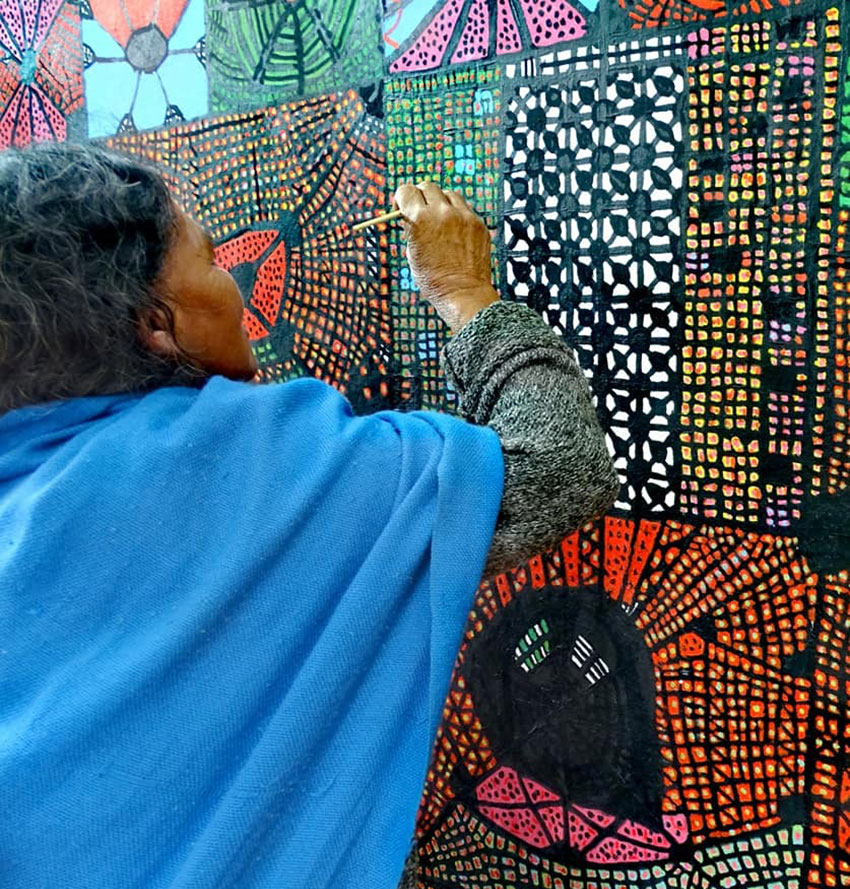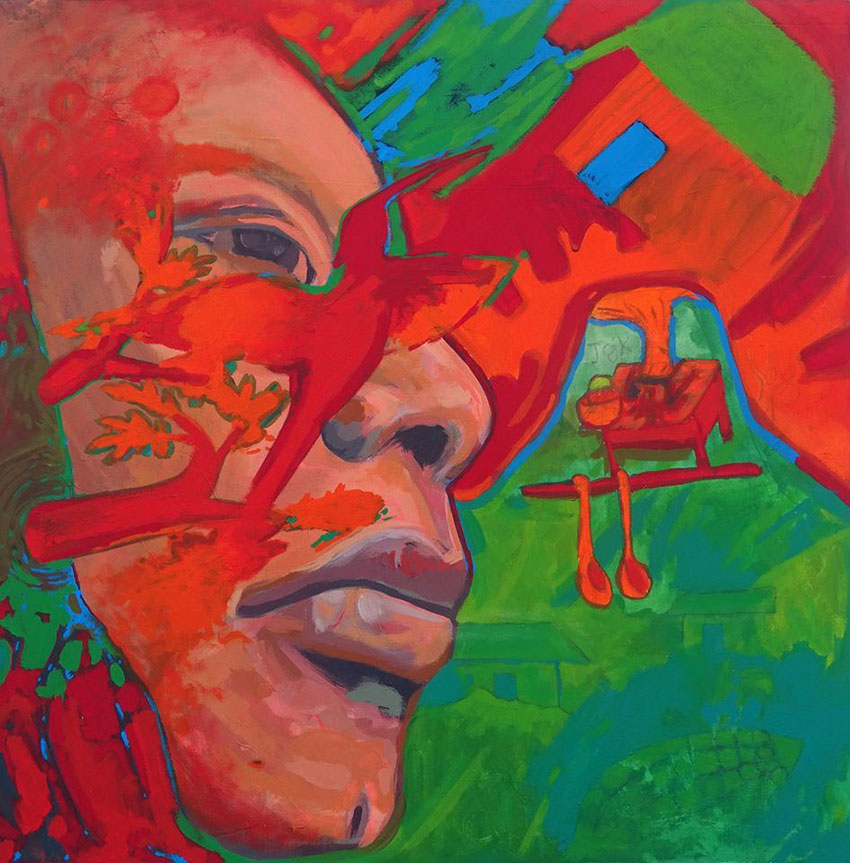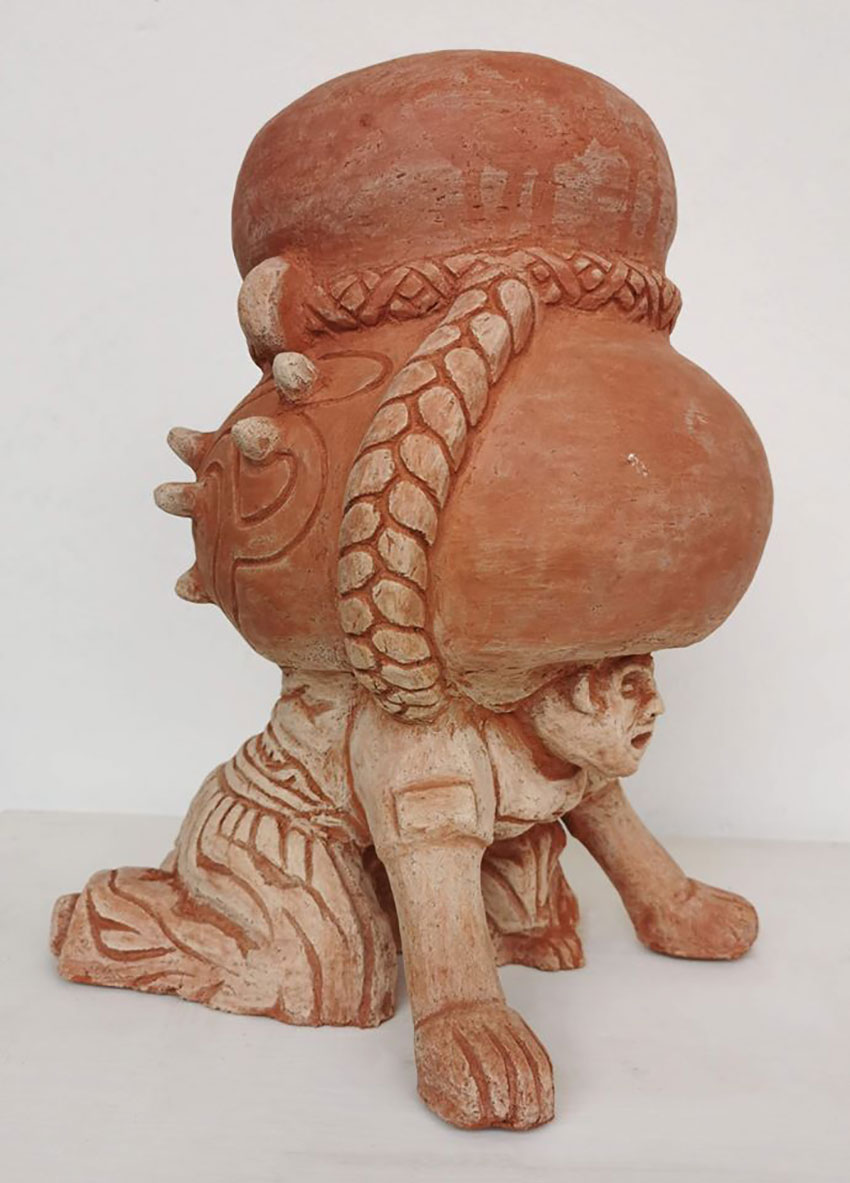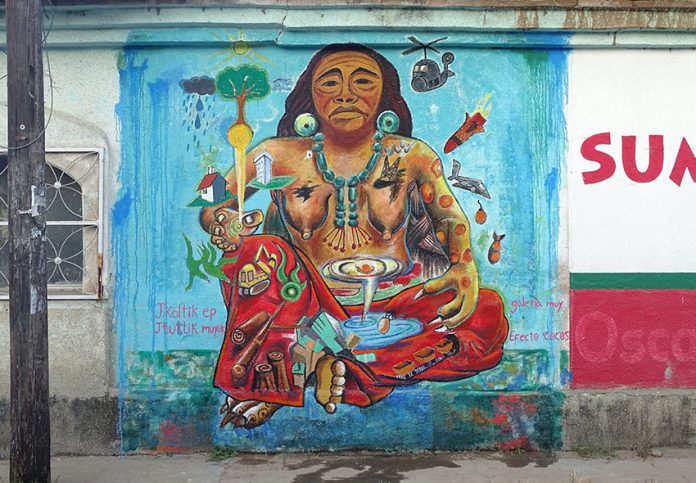Although we usually associate modern art with major cities, traditional indigenous cultures can provide inspiration to take painting, sculpture and more in new directions.
This is why 20 Mayan and Zoque artists, with American anthropologist John Burstein, have joined forces to support indigenous artists, many of whom are self-taught.
Galería MUY is an art gallery, but this only scratches the surface. It is a multi-faceted project involved in production, education, and fair commercialization of fine art grounded in indigenous cultures. Although all the affiliated artists are currently from Chiapas, the long-term goals are to include artists from other parts of the Americas.
MUY is set up with non-profit and for-profit sides, with two separate websites. The non-profit side is dedicated to educating the public and others about the role of modern fine art in indigenous communities. It was prompted by the gallery’s permanent collection (which can be seen live or online), whose purpose is educational. The for-profit side is a kind of informal cooperative, an arrangement the group prefers to avoid problems that can arise from formal legal structures.
On both sides of the house, the art is mostly painting, but there is also work in sculpture, ceramics (traditional and artistic), photography, performance, literature, sound and digital art. The main exhibition hall is dedicated to temporary exhibitions, with work that is for sale, and changes every two months.

These exhibitions have themes important to indigenous communities such as decolonization, gender relations, resistance, autonomy, spiritual nature and more. Burstein says that “the impulse (for a theme) can come from various places,” worked out thorough regular meetings of the collective.
Sales are only one way that the gallery project supports affiliated artists and special guests. It provides workspace, one area for painting and sculpture on premises and a ceramic workshop with kiln in a different building.
All can use the spaces, especially newer artists and those with a specific project. The gallery also has space for performances and other cultural events.
The story of MUY began in December 2014 when Burstein invited local artists Kayum Ma’ax, Cecy Gómez, Saúl Kak and Darwin Cruz to form a cooperative. But Burstein didn’t just drop into San Cristóbal de las Casas in Chiapas and decide to open a gallery. He arrived over 50 years ago to do one of many seasons of field research as a cultural anthropologist.
Over time he has become a fixture in the state. Fluent in both Spanish and Tzotzil, he worked for decades on indigenous rights and economic issues but decided to establish the gallery with some artists he had already come to know. In a short time, they have had contact with many more.
Burstein calls the gallery’s name “a stroke of genius” as it has relevant meaning in both Spanish and Tzotzil. In Spanish, it means “very” and by extension “excellence.” In Tzotzil, it means “enjoyment.” The idea is to work toward excellence while maintaining a sense of fun.

Naming is important. They need to distinguish what they do from the traditional arts and handcrafts of the state, as there is a very modern component.
For general audiences, “contemporary” or “modern” Mayan/indigenous art gets the point across, but not in the art world where those terms now have specific meanings. They have settled on Chiapan Neomayanism for the moment, working with art historians and others to develop the movement’s identity.
The gallery does offer residencies but to date have not been of the typical type for nomadic, international artists. That is not to say there are not opportunities for non-indigenous artists, but Burstein stresses that 85%-90% of what they do is geared for indigenous cultures, something that won’t change.
There have been collaborations but with an eye toward benefiting local communities and keeping sensitivity to indigenous cultural issues.
They have started experimenting with a formal residency that any artist can apply to, but the real hope is to focus on attracting and nurturing indigenous artists from various parts of the Americas.
MUY has had recent success in making its presence known outside of Chiapas. In 2019, it was invited to put on a show at the Centro Médico XXI medical complex in Mexico City, a well-respected exhibition space in the capital. It included 44 pieces from 18 artists focusing on art and indigenous concepts of health.

In February 2020, MUY was accepted to participate in the Material Art Fair in the same city, winning its Hennessy Award for best project.
Future plans include a tour of artists’ work and connecting with more curators, especially though internet technology.
The gallery is located on Nicolas Ruiz 83 in the Guadalupe barrio, just outside the historic center of San Crístobal de las Casas.
Leigh Thelmadatter arrived in Mexico 17 years ago and fell in love with the land and the culture. She publishes a blog called Creative Hands of Mexico and her first book, Mexican Cartonería: Paper, Paste and Fiesta, was published last year. Her culture blog appears weekly on Mexico News Daily.
